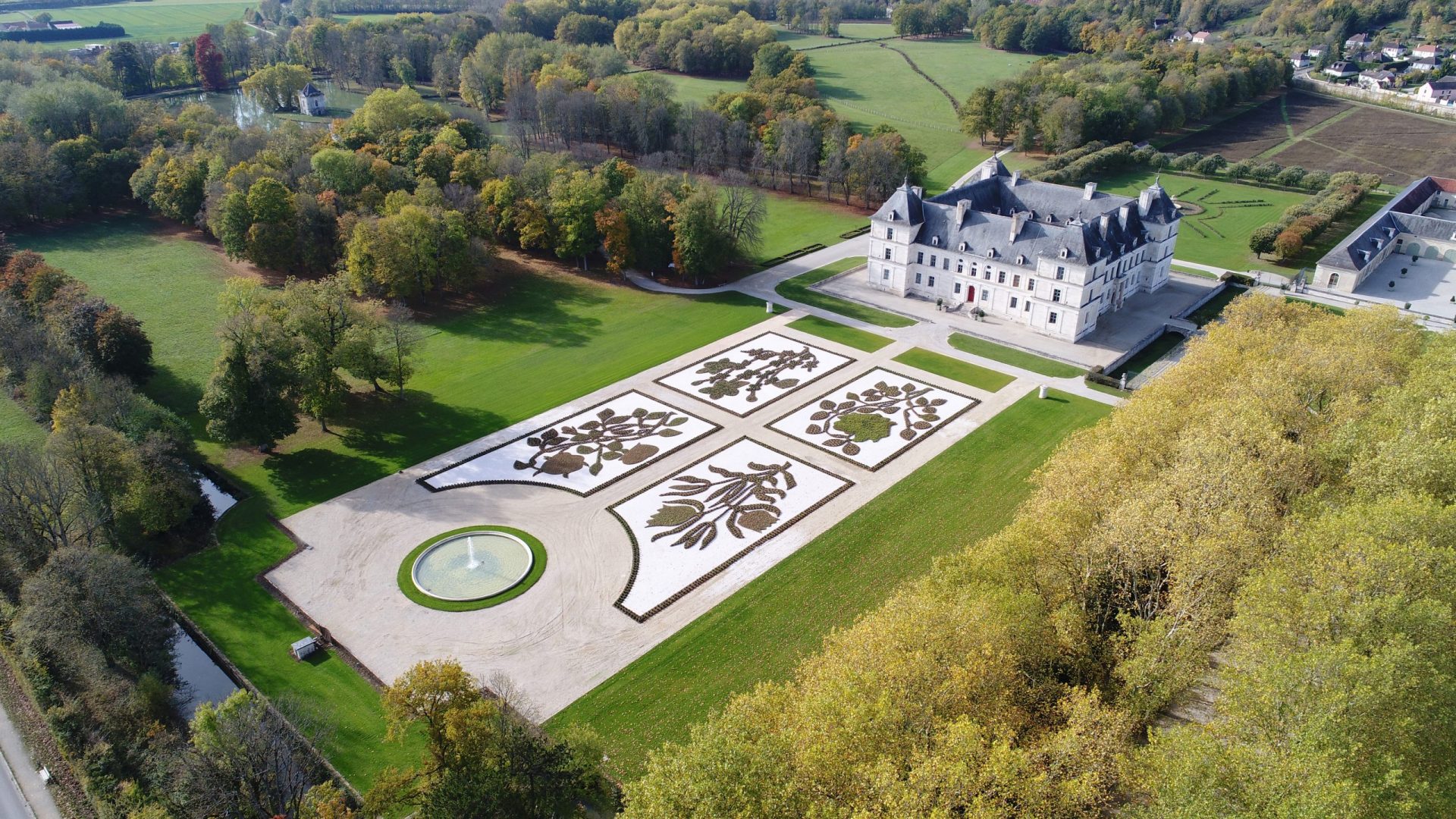Thanks to its composition that is truly original in its simplicity, the chateau of Ancy-le-Franc, representative of the Renaissance ‘art of living’, is unprecedented in France as well as in Italy.
Antoine III de Clermont, who inherited the grounds of Ancy-le-Franc after the death of his mother, Anne de Husson, Comtesse de Tonnerre, decided to have the chateau built here on a blank terrain that would allow him to carry it out completely to his own taste, without having to worry about accommodating an older construction.
It was at the court of François I that this French Lord, Lieutenant General and Grand Maître des Eaux et Forêts, brother-in-law of Diane de Poitiers, met the renowned Italian architect Sébastiano Serlio. This meeting signalled the birth of the Chateau of Ancy-le-Franc.
Building started in 1542 and is thought to have been completed in 1550. Perfect regularity rules the structure of the spaces and the facades. Four main buildings form a perfect square flanked on four sides by pavilions on the corners.
The interior holds a series of remarkable mural paintings (on plaster). Besides the chateau, the estate comprises immense stables, a farmhouse on the grounds and various other constructions, including the small pavilion known as ‘la Folie’ (the insanity), built in 1761 in the middle of a pond on the South side.
The chateau was owned by the Clermont-Tonnerre family until 1683, when it became the property of the Marquis de Louvois, a minister under Louis XIV. The heirs of the Marquis de Louvois were forced to part with it in 1844, in favour of Gaspard-Louis-Aimé de Clermont-Tonnerre, a descendant of Antoine III de Clermont. The princes of the Merodes of Belgium and several other owners followed and today the chateau is in the hands of the company Paris Investir SAS which has set its mind to making sure it is completely restored.
